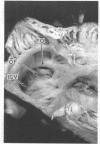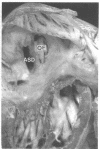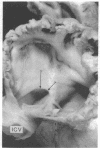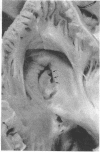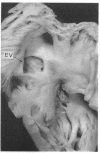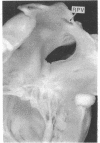Abstract
OBJECTIVE--To determine the anatomical variability of the oval fossa in cases of atrial septal defect and to find out which factors might make such defects suitable or unsuitable for closure by umbrella or clamshell devices. DESIGN--100 specimens with defects of the atrial septum within the oval fossa were studied, especially the position of the defects within the fossa; the area of the defect in relation to the total area of the oval fossa; the shape of the rims and flap valve of the oval fossa; and the anatomical variability in the eustachian and thebesian valves. RESULTS--The oval fossa was displaced to the mouth of the inferior caval vein in four cases; displaced to the mouth of superior caval vein in two cases; placed on the middle of the interatrial wall in 43; or placed slightly towards the inferior caval vein in 51. Because of their shape 29 of the hearts were considered to be unsuitable for transcatheter closure of the defect. This was because the defect was too large (16 hearts); the oval fossa was displaced to the mouth of the inferior caval vein (four hearts) or to the superior caval vein (two hearts); lacked its anterior rim (two hearts); lacked the posteroinferior rim (one heart); because a thick eustachian valve was displaced posteriorly forming a false posteroinferior rim (one heart); or because the strand of insertion of the floor of the oval fossa was too distant from the left atrial aspect (three hearts). CONCLUSION--68 hearts appeared to be ideal candidates for transcatheter closure; 3 would probably have been suitable; but 29 were unsuitable. These morphological variations might explain why the procedure has been unsuccessful in so many cases. Patients should be screened before any attempt is made at transcatheter closure.
Full text
PDF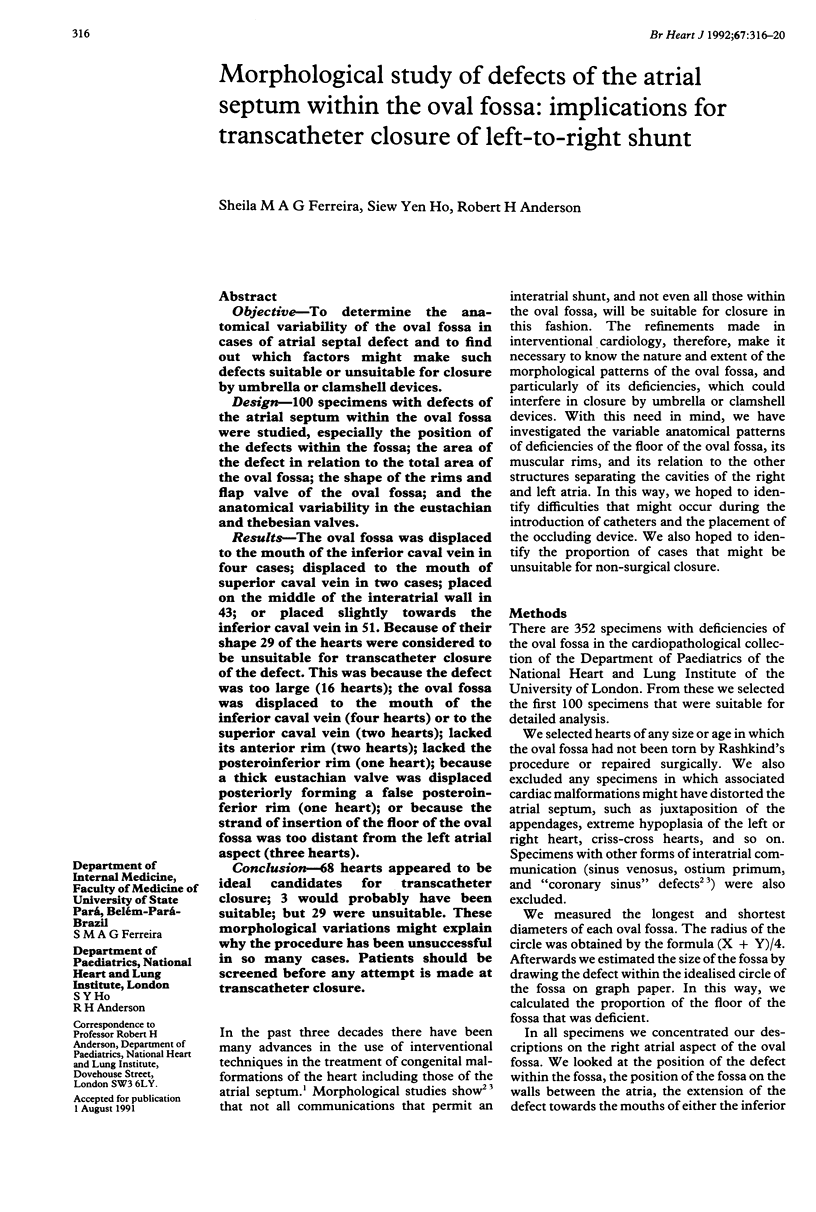

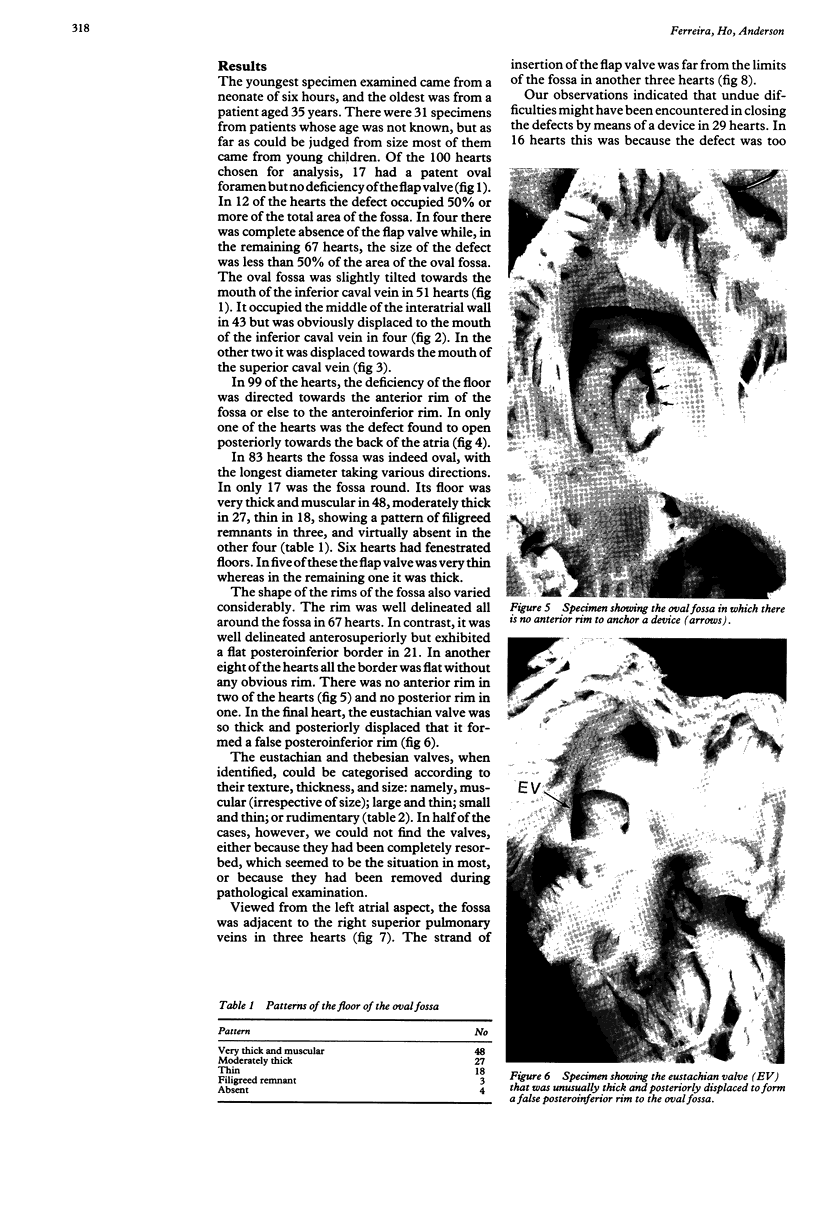
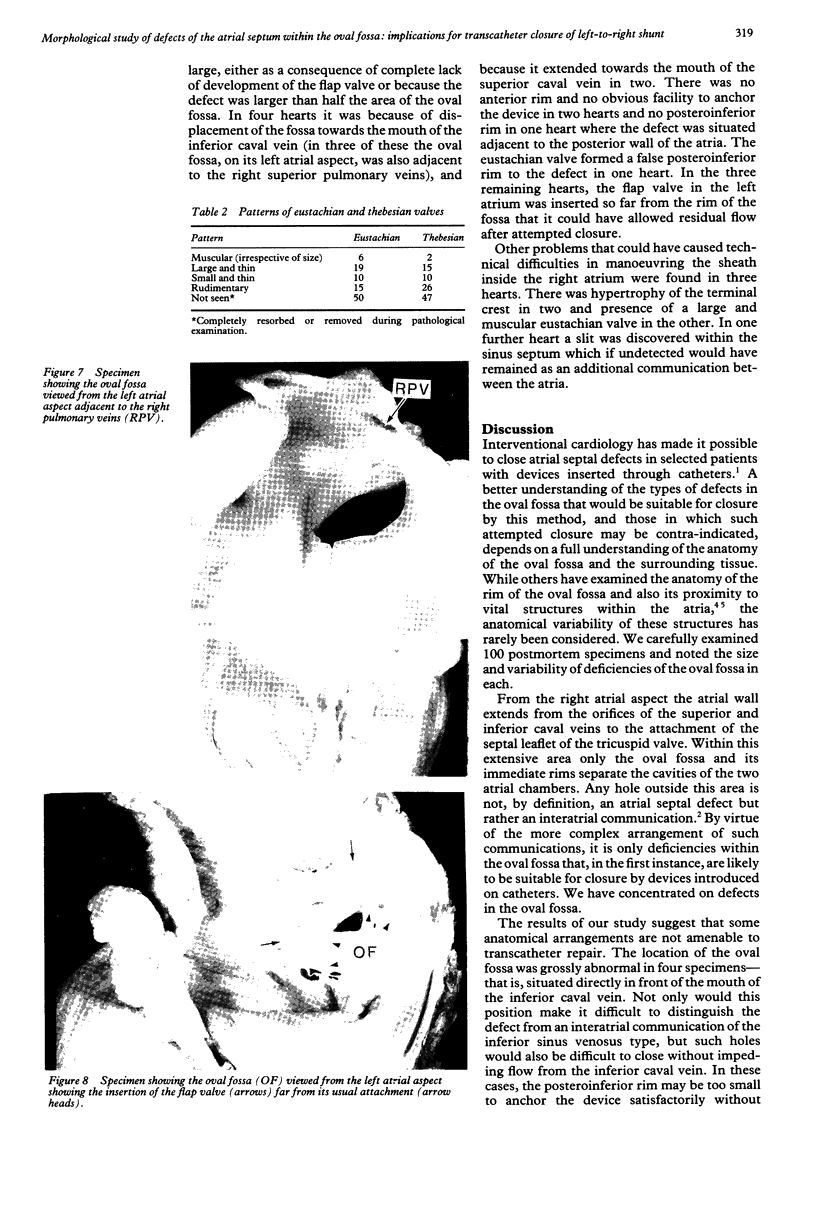
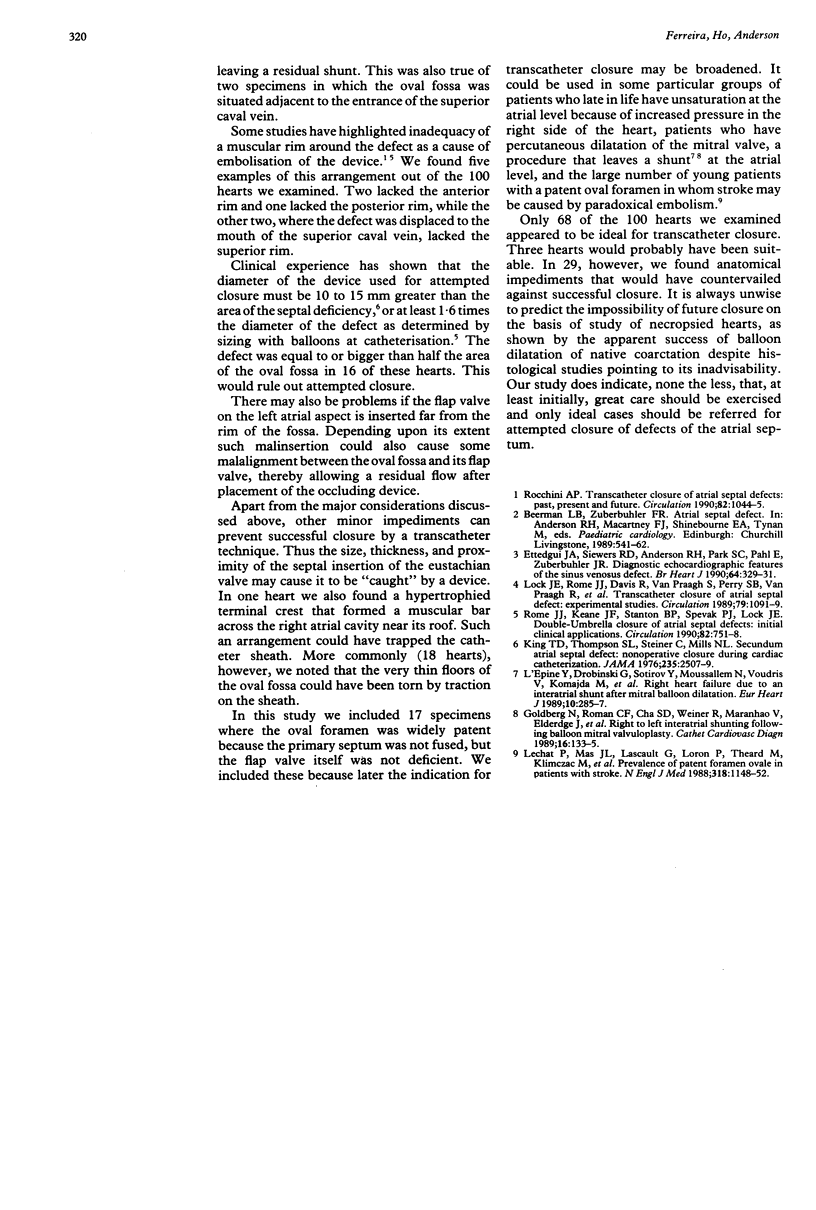
Images in this article
Selected References
These references are in PubMed. This may not be the complete list of references from this article.
- Ettedgui J. A., Siewers R. D., Anderson R. H., Park S. C., Pahl E., Zuberbuhler J. R. Diagnostic echocardiographic features of the sinus venosus defect. Br Heart J. 1990 Nov;64(5):329–331. doi: 10.1136/hrt.64.5.329. [DOI] [PMC free article] [PubMed] [Google Scholar]
- Goldberg N., Roman C. F., Cha S. D., Weiner R., Maranhao V., Eldredge J., Fernandez J. Right to left interatrial shunting following balloon mitral valvuloplasty. Cathet Cardiovasc Diagn. 1989 Feb;16(2):133–135. doi: 10.1002/ccd.1810160214. [DOI] [PubMed] [Google Scholar]
- L'Epine Y., Drobinski G., Sotirov Y., Moussallem N., Voudris V., Komajda M., Grosgogeat Y. Right heart failure due to an inter-atrial shunt after percutaneous mitral balloon dilatation. Eur Heart J. 1989 Mar;10(3):285–287. doi: 10.1093/oxfordjournals.eurheartj.a059479. [DOI] [PubMed] [Google Scholar]
- Lechat P., Mas J. L., Lascault G., Loron P., Theard M., Klimczac M., Drobinski G., Thomas D., Grosgogeat Y. Prevalence of patent foramen ovale in patients with stroke. N Engl J Med. 1988 May 5;318(18):1148–1152. doi: 10.1056/NEJM198805053181802. [DOI] [PubMed] [Google Scholar]
- Lock J. E., Rome J. J., Davis R., Van Praagh S., Perry S. B., Van Praagh R., Keane J. F. Transcatheter closure of atrial septal defects. Experimental studies. Circulation. 1989 May;79(5):1091–1099. doi: 10.1161/01.cir.79.5.1091. [DOI] [PubMed] [Google Scholar]
- Rocchini A. P. Transcatheter closure of atrial septal defects. Past, present, and future. Circulation. 1990 Sep;82(3):1044–1045. doi: 10.1161/01.cir.82.3.1044. [DOI] [PubMed] [Google Scholar]
- Rome J. J., Keane J. F., Perry S. B., Spevak P. J., Lock J. E. Double-umbrella closure of atrial defects. Initial clinical applications. Circulation. 1990 Sep;82(3):751–758. doi: 10.1161/01.cir.82.3.751. [DOI] [PubMed] [Google Scholar]




